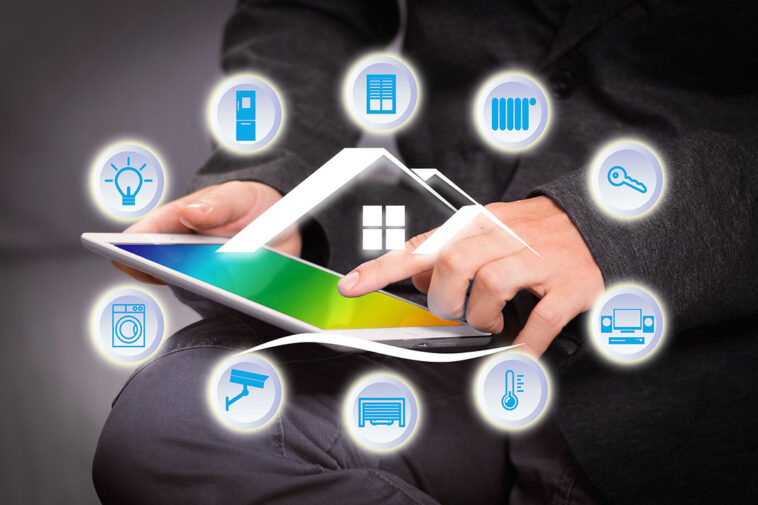A decade ago, it would have seemed impossible to control your home’s thermostat, lights, and security system via your smartphone. Smart homes became a reality a few years back. Zion Market Research predicts that this market will reach $53.45 billion by the end of 2024. That is just a few months away from today, and we already can notice tremendous changes. There is a good chance that smart devices will become fixtures in homes as more and more people learn how convenient this technology can be.
So, yes, many amazing things that we see in the movies and sci-fi shows can actually exist in our homes. And, if you are into smart appliances and the idea of them changing our lives completely, this article is for you.
We will talk about what a smart house is and how it will look ten years or more from now.
Did you know one of the first smart assistants was built in 1980 to alert nurses and families when an elderly person fell over? Pretty cool, right?
Facebook founder Mark Zuckerberg created his own smart home assistant: J.A.R.V.I.S. It is an A.I. solution, with Morgan Freeman as the voice.
Want to know some more “smart” facts?
Home Automation Facts
- More than 1 billion bulbs are connected to the internet already
- A smart home system in the future will increase the value of a house up to $50,000
- Till now, the number of smart homes in the world is almost 180 million-plus
- Out of the $100 billion security market, home security systems generated over $47 billion in 2024
- With innovative home technology, a homeowner can reduce their electricity bill by as much as 31%
- 86% of millennials would pay more for a connected home
Thinking of going smart already?
Well, we thought so! The only thing you need is a great internet connection, and more stuff can be added to the smart home appliance list for the future. So, if you plan to do so, start looking for a reliable internet service provider already. You will find tons of them out there with affordable deals and packages.
Click on this link to get one today!
Future of Intelligent Home Technologies You Must Know About
1. Smart Appliances
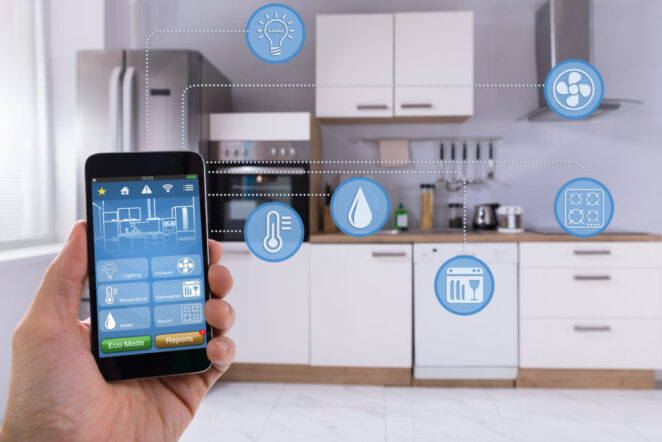
Eventually, we will all start to realize the benefits of owning smart appliances as our phones, watches, and even jewelry become smarter. Consider a refrigerator where you can order a glass of water via your mobile phone and have it waiting for you when you walk through the door. Imagine how cool an internet-ready microwave would be – it would tweet out your meal automatically to the world. Obviously, that last example is a joke, but you get the point, right?
A variety of devices with touchscreen displays and multiple sensors are already available, including refrigerators, washers, dryers, and more. Several of them are even Internet-ready, meaning that you can use apps directly from the device.
Smart appliances have the potential to make life more convenient and simple, as they become increasingly intuitive, learning your preferences and making life easier. Although this does raise questions about what information big data companies might collect, such as when you eat every day, we will see that.
2. Smart Toilets
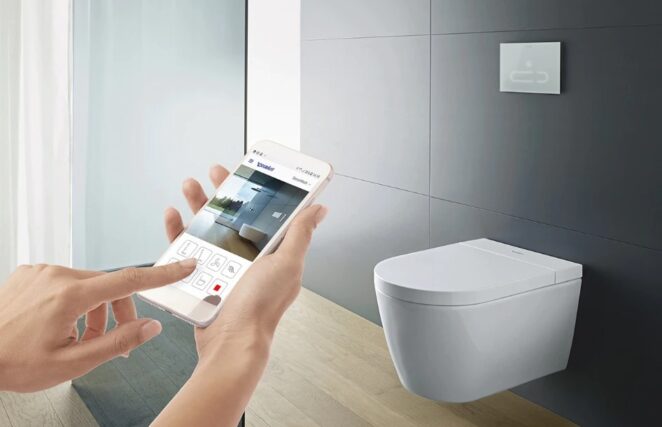
Even though it seems a little absurd to turn a pot you use for “that” into something “smart,” it is already happening. Japan has toilets that can analyze urinalysis samples after people go to the bathroom and tell them whether they have diabetes or not.
The main benefit of smart toilets seems to be keeping us healthy. This makes a lot of sense when you think about it. Analyzing urine and stools can teach you a lot about a person. Women may soon be able to determine whether they are pregnant by analyzing their urine or if someone has colon cancer by analyzing their stool.
Besides deodorizers and flushing systems, other intelligent features like heated seats are also of great use—the last one especially, since no one wants to sit on a cold toilet seat.
Among the most advanced and “smart” toilets on the market, Kohler’s Numi toilet seat pushes the envelope a bit. With integrated foot warmers, heated seats, air dryers, bidets, motion-activated covers and seats, and of course, an illuminated touchscreen with MP3 playback support, it offers the ultimate in luxury living.
3. Automated Robots

There is still a long way to go before we can build a humanoid robot that can operate freely. Nevertheless, automated robots are already being used in many homes today. There are devices like the iRobot and Neato that clean your floors autonomously. That is about the extent of consumer robots so far.
But do not worry. Scientists in Germany have unveiled a robot prototype that can do more than simply clean floors. The device consists of a one-armed and three-fingered arm that can pick up items, clean up, operate various machines, and even serve guests drinks. The robot does not clamp down on a human’s arm because of an integrated sensor system. Additionally, a touch screen is embedded into the device, although it can also respond to voice commands. Preprogrammed gestures are also available.
This is only one of the robots currently in production. It will not be long before we have more automated helpers at home.
4. Lighting Controls
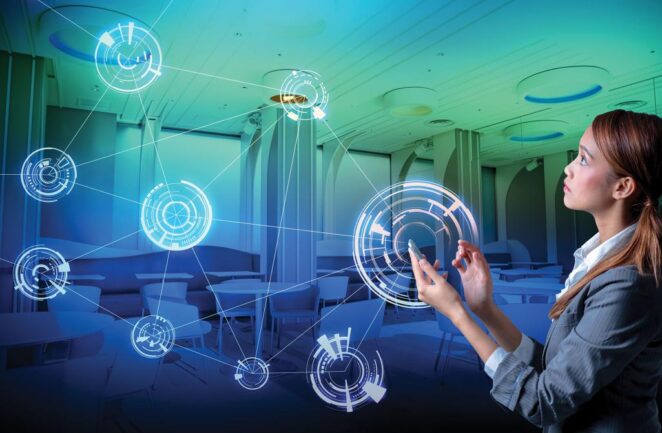
Lamps and ceiling lights can no longer be switched on with a wall switch. Yes, we do that now, but it would be too old-fashioned in the years ahead. Depending on how your home is set up, lights can now be controlled from a mobile device, touchscreen panel, or an automated system.
You can even program a smart thermostat, such as NEST, to turn on the lights in your home when you get home from vacation and cool the air as soon as you do. It would be wonderful to program your system so it turns on lights at specific times throughout the day or night.
Many hope that advanced lighting controls will become a standard feature by the time new homes are built. Fingers crossed for that!
5. Power/Energy Tracking Tech
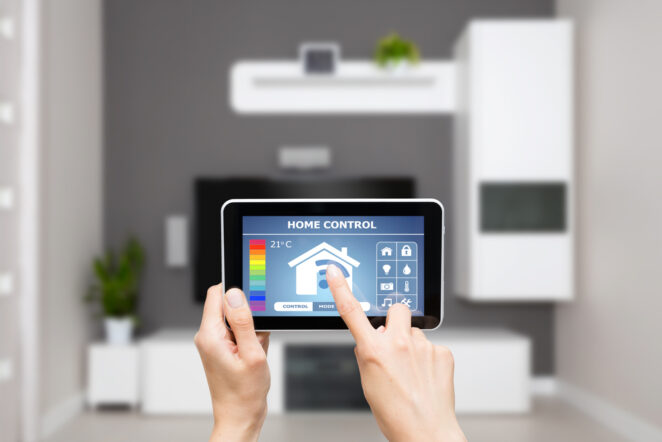
If your car can tell you when it needs an oil change, why can’t your home? Imagine an air conditioner that can notify you when the air filter needs to be changed.
Or, better yet, think about an energy system that can notify you if you go over your monthly power budget. Maine-based Powerhouse Dynamics recently launched a program that can help homeowners manage their energy usage. The system tracks a home’s energy consumption, associated costs, and carbon footprint on a minute-by-minute basis, so homeowners can make informed choices regarding their energy consumption.
In addition, it can analyze appliances and equipment in a home, telling homeowners when they should upgrade to more energy-efficient products. The system is continuously being upgraded to add new functionality and become more useful.
The market will soon be flooded with more than a couple of competitors, and power tracking systems will become a standard in modern homes. Let’s hope so!
Wrapping it Up
The concept of connected devices may seem like a science fiction dream, but according to experts working in the field at companies like Google and IoTeX, the heavenly future is within reach.
As a result of a number of trends, the vision of a connected, convenient, and “smart” home is becoming a reality. It’s definitely a good thing to spend a lot more time at home then. A few of the many ways in which our home will be transformed in the future include the aforementioned technologies.



